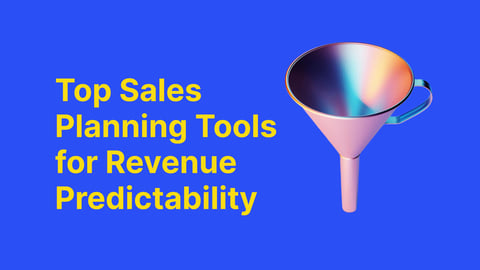Before reading on, take a minute to think about the following: what does a great sales report look like to you? Should the emphasis be on the success of the individual or focus on the team? Are you wanting to see how a product is performing or which territory is on fire? And how about comparative data so you can compare the ‘right now’ to last quarter or last year? Are you wanting some competitor analysis and what’s the value in reviewing a poor month?
Those typical questions barely scratch the surface and it’s likely that your head is already spinning. It’s no wonder that for those in the market for sale performance management software, there’s an element of guesswork when selecting your solution.
What Should be Included in a Sales Report?
First thing is determining the basics for inclusion and understanding the purpose of a sales report. It should be a summary of sales activity over a set period of time and region, with the data presented giving clear meaning to growth or possible loss. Sales reps, managers, directors and stakeholders should be able to access the data and gain insight. It should also be a road-map towards future strategy and give enough information to avoid costly errors. Simple eh? With that in mind, maybe we can do away with all the variables and cut to the chase of what tool is out there to make the magic happen. Not quite. Read on, please.
What’s its Purpose?
Nothing like starting something straightforward than an existential question. Actually, it’s the simplest question to answer. Why are you reporting and what are you reporting on? The trick is to home in on the subject rather than trying to make a single report all things to all people. If it’s an annual summary on deals closed by individuals, there’s little point going off-topic to show a dashboard on possible expansion plans for five years’ time. If it’s to justify who has earned commission over a quarter, the core data needs to cover all the relevant elements. Very few people have the time or inclination to sit through a presentation or print over a report (does anyone still do that?) that is irrelevant or off-topic.
Who is My Audience?
Now we’re cooking on gas. To avoid the issue of presentation shut down (aka sleeping with your eyes open), understand from the get-go who your audience is. The same way a baseball fan obsesses over their team performance but maybe not so much the half-time ads, you need to appreciate the specialisms and key interests across your business. For example, your marketing specialist is primarily curious in how a campaign has influenced sales or brand growth, while sales managers want to see wins and profit margins. Not so much the downturns, but that’s important, too. In short, if your sales report successfully engages with the right people, it won’t just be shoved in a drawer or used to stabilize a wonky table; it will be scrutinized and used to shape and influence strategy, training programs and compensation schemes.
Where am I Drawing Data from?
The next consideration is the point where you put some quality meat around the bones. You need to gather and filter the data. This is where some understanding of analysis is critical. Again, you can’t go after everything, so are you sure of your metrics? Does the information align with the wider key performance indicators (KPIs) and objectives of your business?
This information isn’t plucked out of the air, either. By using a sales performance management (SPM) tool such as the one offered by Varicent, you can determine the variables and focus that will add the most value and relevance to the report. It can also create some best-in-class sales templates that allow you to personalize or generalize data to exactly the right level.
Think about both need and goal; what do you need to know and how can that information and analysis help you and your team?
A key advantage of utilizing bespoke software when creating a sales report is it eliminates all the stuff that doesn’t really matter and leaves the data that matters. It’s also far more reliable and cleaner than the spreadsheet method of capturing data.
A standard sales report should include the KPIs, number of goods sold, net sales, profits and customer acquisition costs.
As this is the point you’re really drawing down on the data. If your building a team to start selling in a new territory, they need to understand what other competitors are out there, what their quota is and what their sales targets are in order to get the most out of this opportunity.
Whether the purpose of the report is to look at regional sales, one person’s performance or determining commission, you’ll also need to define a time period as a parameter. This is a tried and tested way of measuring trends, performance and changes to market conditions against actual sales.
Depending on your need, you might also want to include sales growth, regional sales, new opportunities, team performance and other metrics.
Could Some Visuals Help?
Visuals always help. If they’re correct. Let’s unpick that slight contradiction. Good visuals illustrate and bring to life the most turgid and complicated information. Good visuals also reduce the complexity of a long and detailed sales report. It can be an incredibly useful part of your sales report. A pie chart or graph turns multiple lines of numbers into something solid and recognizable. A line graph is a valuable tool for quickly showing upturns and downturns, a pyramid is excellent for representing sales strategy and goals, while you’d find it hard to argue with a pie chart that shows numbers of deals closed over a month. And of course, they add color and interest to a presentation.
But… user beware. Make sure the data you’re showing is correct. That 3D multi-coloured model seems like the silver bullet in presenting, just make sure that it is giving out the right information.
Visuals aren’t just graphs and charts, either. You can liven up a presentation with images, memes, icons and video clips but again, think of the audience. The yawning cat may amuse your colleagues in the sales team, but a senior manager might not share the joke. That shouldn’t put a limit on your potential creativity, though. If you have the justification and bandwidth to go multimedia, why not?
Remove the Rubbish
Whether you’re reading a report or seeing it presented in a meeting, you’ll have had that experience where all you can think is ‘Why am I being told that” Yep, that’s another 5 minutes of your life (and your potential selling time) that you’ll never get back.
Now you’re in the report producing driving seat, just take a few moments to ensure that everything included is relevant and within context. Whether you’re addressing a conference room full of peers (more likely a Zoom meeting in 2020) or that report is for the eyes of the CEO only, it was to be a good use of their time.
We’ll apply the rule of relevance to an example. You want to increase your physical presence in the mid-west of the US and convince a host of people, including sales managers, the senior execs and hiring managers that more staff and investment is the answer. By utilizing a territory management software tool you can hone in on the data that matters most, show off regional dashboards that back up your case and present value-rich competitor analysis. All-in-all, a well-constructed sales report that will generate interest and buy-in rather than stifled yawns.
To achieve this result, we’d recommend applying some ‘c’ words when compiling a sales report; Clarity, cohesion, conciseness, comprehensible, but never contradictory or condescending.
Content (and Context) is King
As you can see, we haven’t quite finished with the c words. It’s just worth putting in a reminder that for your sales report to make sense as well as look good, there needs to be a rationale and context around the data. For example, if sales are dropping off in Asia, is it because of market conditions or weather conditions? If a previously high-flying sales rep has experienced a dip, is it the reason that they have too high a quota to meet or too vast an area to cover? This current time of COVID-19 is a truly relevant example of why we require the story behind the numbers. Sales of hand sanitizer continue to flourish in supermarkets, yet concert venues, theaters and hotels remain at least partially closed, so they have no need for their purchase of sanitizer right now. In that scenario would represent a vastly different data picture in your sales report.
Ask for Feedback
As with all work-related output, a sales report is likely to generate a litany of comments and opinions from those reading, watching or hearing it. We say welcome the feedback and take heed of the critique. Your audience may not always like the information on offer (especially if it pertains to one person not doing so well) but they will have valid opinions on how they digested and understood the report. If it’s a digital presentation, include a feedback section where you can gauge if your presentation was clear, relevant and digestible.
In Summary
First thing on the subject of last things is provide a summary. Make sure you have one killer slide or piece of information that captures the whole essence of the sales report. If your audience takes away nothing else, determine that golden nugget which encapsulates everything else you want to convey.
And can we reiterate the power and purpose of using powerful, helpful sales performance tools to automate the reporting process? With one suite of software, you get streamlined accurate information when you need it and avoid all the inconsistencies of jarring programs.
All sales reports are not created — or delivered — equal. Our parting advice would be this:
- Be clear in what you want to state and who your audience is
- Make sure the numbers make sense
- Spend time on perfecting presentation
- Create a killer slide or graph that will be remembered
- Before sending out or presenting, do several sense checks
- Read it back to yourself and a test audience
- Invest in software that will automate and integrate all of your sales information
If this guide has whetted your appetite for sales reporting and you to want to get on board with the latest sales performance management software, speak to your Varicent contact today or visit www.varicent.com




